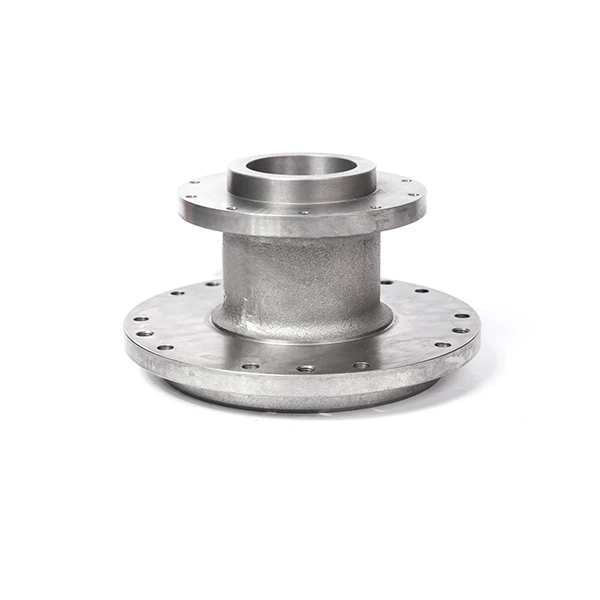Mobile:+86-311-808-126-83
Email:info@ydcastings.com
Heat Treatment Processes for Enhancing the Properties of Aluminum Castings in Manufacturing
Heat Treatment of Aluminium Castings
Aluminium castings are widely used in various industries due to their excellent mechanical properties, low density, and corrosion resistance. To enhance these properties, heat treatment is often employed as a critical process in the manufacturing and finishing of aluminium castings. This article will explore the different heat treatment processes, their significance, and the effects on the properties of aluminium castings.
Understanding Heat Treatment
Heat treatment refers to the controlled heating and cooling of metals to alter their physical and sometimes chemical properties. For aluminium alloys, particularly those used in casting, heat treatment is essential for improving strength, ductility, and wear resistance. The main types of heat treatments applicable to aluminium castings include solution treatment, aging (or precipitation hardening), and annealing.
1. Solution Treatment
The solution treatment process involves heating the aluminium casting to a specific temperature, usually around 480 to 550 degrees Celsius, depending on the alloy composition. This temperature is high enough to dissolve the soluble alloying elements (such as copper, magnesium, or silicon) into the aluminium matrix, forming a solid solution. The casting is held at this temperature for a predetermined duration to ensure uniform temperature and dissolution, after which it is rapidly quenched in water or oil. The quenching process locks the dissolved elements in place, preventing them from precipitating out of the solution, thereby stabilizing the microstructure.
2. Aging (Precipitation Hardening)
Post-solution treatment, the aluminium casting undergoes aging, which can be done naturally at room temperature or artificially at elevated temperatures (typically around 150 to 200 degrees Celsius). Aging allows the dissolved alloying elements to precipitate out of the solution, forming fine particles that hinder dislocation movement within the aluminium matrix. This results in increased strength and hardness. The aging process can significantly enhance the mechanical properties of the casting, making it suitable for applications that require high strength-to-weight ratios.
3. Annealing
heat treatment of aluminium castings

Annealing is another heat treatment process, primarily used to soften aluminium castings, relieve internal stresses, and enhance ductility. This process involves heating the casting to a specific temperature, usually around 300 to 400 degrees Celsius, and holding it there for a prescribed period before slowly cooling it down. Annealing is particularly beneficial for castings that have been cold-worked or subjected to thermal stresses during the manufacturing process. The re-crystallization during annealing results in a more uniform microstructure and improved machinability.
Significance of Heat Treatment
The heat treatment of aluminium castings is crucial in optimizing their performance characteristics. By adjusting the heat treatment parameters—temperature, time, and cooling rates—manufacturers can tailor the mechanical properties to meet specific requirements. Properties such as tensile strength, yield strength, hardness, and impact resistance can all be enhanced through appropriate heat treatment.
Moreover, heat treatment also plays a pivotal role in improving the corrosion resistance of aluminium castings. The formation of a stable oxide layer during the solution treatment and aging process helps protect the underlying metal from environmental factors, prolonging the lifespan of the component.
Challenges in Heat Treatment
Despite its advantages, heat treatment of aluminium castings is not without challenges. The sensitivity of aluminium alloys to heat treatment parameters means that even minor deviations can lead to undesirable outcomes, such as warping, cracking, or excessive grain growth. Close monitoring of the heat treatment process is essential to achieve consistent results.
Additionally, the selection of the correct heat treatment process must align with the specific alloy and intended application of the casting. Aluminium alloys vary significantly in their response to heat treatment, and thus not all alloys will benefit equally from the same treatment.
Conclusion
In summary, heat treatment is an indispensable step in the production of aluminium castings, significantly influencing their mechanical and physical properties. By understanding and controlling the various heat treatment processes, manufacturers can enhance the performance of aluminium castings, making them suitable for a wide range of applications in industries such as automotive, aerospace, and engineering. With ongoing advancements in heat treatment technologies, the future of aluminium casting looks promising, paving the way for increasingly sophisticated and durable components.
-
Valve Body Acts as the “Heart” of Flow ControlNewsMay.19,2025
-
Understanding the Importance of ImpellersNewsMay.19,2025
-
Importance of Automobile Water PumpsNewsMay.19,2025
-
How an Engine Oil Pan Works to Keep Your Car LubricatedNewsMay.19,2025
-
Common Materials Used in Pump Impeller ManufacturingNewsMay.19,2025
-
Ball Valve Casting in Modern Pipeline SystemsNewsMay.19,2025











